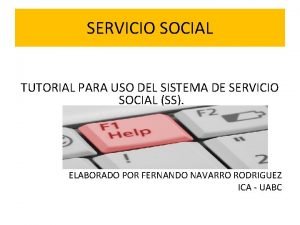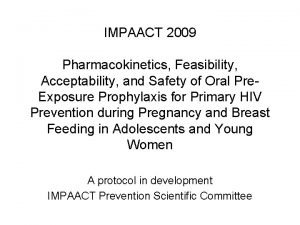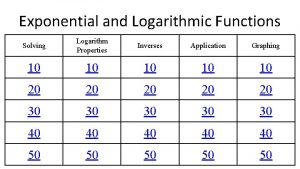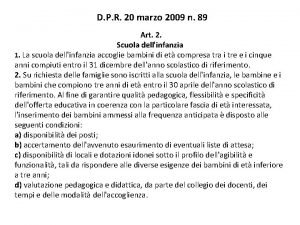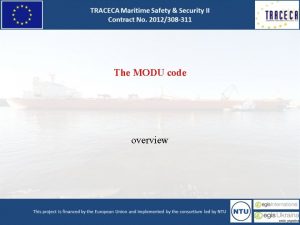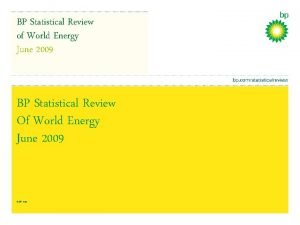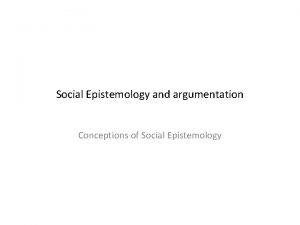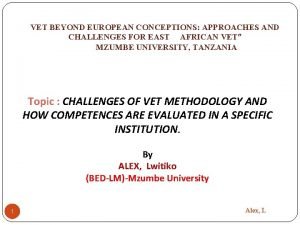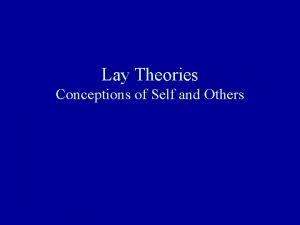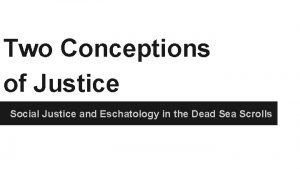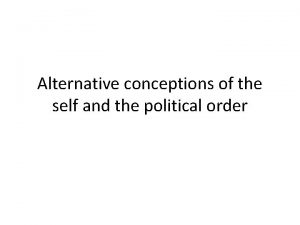n Defourny J and Nyssens M 2009 Conceptions











































































- Slides: 75


第一部份 歐洲、美國社會企業形成、發展與趨勢 本節內容係主要根據以下三筆資料整理而成: n Defourny, J. , and Nyssens, M. (2009). “Conceptions of Social Enterprise and Social Entrepreneurship in Europe and the United States: Convergences and Divergences, ” Second EMES International Conference on Social Enterprise, University of Trento, Italy, July 1 -4, 2009. n Defourny, J. (2010). “The Worldwide Emergence of Social Enterprise: A Comparative Analysis of Europe, the United States and Eastern Asia. ” Keynote speech, International Conference on Social Enterprises in Eastern Asia, Taipei, June 14 -15, 2010 n Kuan, Y. Y. , (2007), “Social Enterprise Development in Taiwan”, China Nonprofit Review 1 (November) : 146 -181. (in Chinese)






A. 合作社模式的法律架構 n n 義大利(1991):社會合作社(Social Cooperative) 葡萄牙(1998):社會團結合作社(Social Solidarity Cooperative) n 西班牙(1999):社會創新合作社(Social Initiative Cooperative) 法國(2001):集體利益合作社團(Cooperative Society of Collective Interest) n 波蘭(2007):社會合作社(Social Cooperative) n

B. 開放模式的法律架構 n 比利時(1995):社會目的公司(Social Purpose Company) n 英國(2004):社區利益公司(Community Interest Company) n n 芬蘭(2004):社會企業(Social Enterprise) 義大利(2006):社會企業(Social Enterprise)



n n In October 2001 Douglas Alexander, the government minister with relevant responsibilities, announced the creation of the Social Enterprise Unit within the Department of Trade and Industry. Working groups across key themes, comprising government officials and stakeholders, were established to initially guide the direction of the SEn. U. Major barriers to healthy development of social enterprise were identified by these working groups. They included: “poor understanding of the particular abilities and value of social enterprise; little hard evidence to demonstrate the impact and added value of social enterprise; fragmented availability of accessible, appropriate advice and support; difficulty accessing and making use of what is perceived to be limited appropriate finance and funding available; limited account taken of the particular characteristics and needs of social enterprise within an enabling environment; and complexity and lack of coherence within the sector, combined with widely varying skills and knowledge bases” Source: http: //www. benmetz. org/? p=407

五、 «EMES EUROPEAN NETWORK» 在推動社會企業研究上扮演的角色 n The «EMES EUROPEAN NETWORK» (EMES)是由 10個歐洲 的研究中心,10位個人會員所組成 (1990年代中期) ; n 從歐洲的研究觀點分析社會企業的角色功能 ; n 針對歐洲的社會企業(如 作整合型SE、個人福利服務型SE、 地方社區發展型SE)予以廣泛、深入的研究 ; n n n 2001年出版了 «The Emergence of Social Enterprise» (Borzaga and Defourny, eds), Routledge ; 2001 -2005年期間,從事 «Work Integration Social Enterprises» 的 大規模跨國研究 ; 2006年出版了 «Social Enterprise. At the Crossroads of Market, Public Policies and Civil Society» (M. Nyssens, ed. ), Routledge,

The EMES 觀點— 社會企業(SE)的 經濟層面內涵 1. 係一種持續生產財貨與銷售服務的活動 (A continuous activity producing goods and/or services) 2. 高度的自主性(A high degree of autonomy) 3. 需承受相當顯著的經濟風險(A significant level of economic risk) 4. 至少需要聘有最低限度數量的付薪員 (A minimum amount of paid work)

The EMES 觀點— 社會企業(SE)的 社會層面內涵 1. 服務社區及從事有益於社區活動的組織目標(An explicit aim to benefit the community) 2. 由社區一群民眾發起創立的組織(An initiative launched by a group of citizens) 3. 決策制定權的享有並非取決於出資多寡 (A decision-making power not based on capital ownership) 4. 參與的特質--強調那些受到組織活動影響的人們也有參 與權(A participatory nature, which involves the persons affected by the activity) 5. 有限度的利潤分配(Limited profit distribution)

The EMES對於社會企業內涵的詮釋 n 社會價值宗旨的強調(The Social Mission) n 產品與服務的生產與社會價值宗旨 的關連性(The Production of Goods and Services and their Relation to the Social Mission) n 經濟的風險(Economic Risks)


The EMES對於「社會企業」的界定 n The EMES: “Social enterprises are not-for-profit private organizations providing goods or services directly related to their explicit aim to benefit the community. They generally rely on a collective dynamics involving various types of stakeholders in the governing bodies, they place a high value on their autonomy and they bear economic risks related to their activities. ”


「賺取所得」的思想學派 ( The “Earned Income” school of thought ) n n n 商業性質的非營利組織模式( “Commercial Non-Profit” Approach) 著重於NPO賺取所得的策略 « Any earned-income business or strategy undertaken by a nonprofit to generate revenue in support of its charitable mission» (Social Enterprise Alliance )






「社會革新」的思想學派 (The “Social Innovation” school of thought ) Ashoka’ History n Rather than leaving societal needs for the government or business sectors to address, social entrepreneurs are creating innovative solutions, delivering extraordinary results, and improving the lives of millions of people. It is this insight into the power of social entrepreneurs that led Bill Drayton to found Ashoka in 1980 and that continues to guide Ashoka today. n n Beginning with the first Ashoka Fellows elected in India in 1981, Ashoka has grown to an association of over 2, 000 Fellows in over 60 countries on the world's five main continents. During its first decade in Latin America, Africa, Asia, and Central Europe, Ashoka focused exclusively on launching leading social entrepreneurs and helping them succeed. But in the 1990 s as the citizen sector evolved and grew, Ashoka responded with a wider range of programs and initiatives to deal with the sector's growing needs. Ashoka grew as well, tripling in size from 1988 to 1990, and again from 1999 to 2002. Source: http: //www. ashoka. org/visionmission

















































參考文獻 n n n Defourny, J. (2004), “Introduction: From Third Sector to Social Enterprise, ” in C. Borzaga and J. Defourny (eds. ), The Emergency of Social Enterprise. London and New York: Routledge. Defourny, J. , and Nyssens, M. (2009). “Conceptions of Social Enterprise and Social Entrepreneurship in Europe and the United States: Convergences and Divergences, ” Second EMES International Conference on Social Enterprise, University of Trento, Italy, July 1 -4, 2009. Defourny, J. (2010). “The Worldwide Emergence of Social Enterprise: A Comparative Analysis of Europe, the United States and Eastern Asia. ” Keynote speech, International Conference on Social Enterprises in Eastern Asia, Taipei, June 14 -15, 2010 Kuan, Y. Y. , (2007), “Social Enterprise Development in Taiwan”, China Nonprofit Review 1 (November) : 146 -181. (in Chinese) Kuan, Y. Y. , and Wang, S. T. (2009 -2010), Analyzing the Roles of Social Enterprises in Taiwan in Employment and Poverty Reduction. Research Project granted by Ministry of Economic Affairs, Taiwan, July 2009 -June 2010. (in Chinese) Kuan, Y. Y. , and Wang, S. T. (2010). “Taiwanese Social Enterprises: Characteristics, Development Trend, and Effect, ” paper presented at the 2010 International Conference on Social Enterprises in Eastern Asia: Dynamics and Variations, 14 -17 June 2010.
 Spiritual conceptions
Spiritual conceptions Discrepancy matrix
Discrepancy matrix Coroners and justice act 2009
Coroners and justice act 2009 Saunders lewis and thornhill 2009
Saunders lewis and thornhill 2009 Saunders lewis and thornhill 2009
Saunders lewis and thornhill 2009 2008-2009 school year
2008-2009 school year 2009 mathematics standards of learning answers
2009 mathematics standards of learning answers Sistema integral de servicio social
Sistema integral de servicio social Uma maquina fotografica custava 400 no dia dos pais
Uma maquina fotografica custava 400 no dia dos pais Nmc record keeping guidance 2009
Nmc record keeping guidance 2009 Ssdt customs
Ssdt customs Plan nacional del buen vivir 2009 al 2013
Plan nacional del buen vivir 2009 al 2013 Permenkes 51 tahun 2009
Permenkes 51 tahun 2009 R.t.t. 2009
R.t.t. 2009 January 2006 chemistry regents answers
January 2006 chemistry regents answers Institutional calendar
Institutional calendar Rte act 2009 implementation
Rte act 2009 implementation Impaact 2009
Impaact 2009 In 2009 there were 1570 bears
In 2009 there were 1570 bears Rosa catania 2009
Rosa catania 2009 Calendario escolar 2009 a 2010 sep
Calendario escolar 2009 a 2010 sep Nice 2009
Nice 2009 Decreto 1290 de 2009
Decreto 1290 de 2009 Dpr 89/2009
Dpr 89/2009 Microsoft word 2009
Microsoft word 2009 2009 pearson education inc
2009 pearson education inc Chapter 6:2 interpreting word parts
Chapter 6:2 interpreting word parts 2009 delmar cengage learning
2009 delmar cengage learning Medical terminology chapter 1 learning exercises answers
Medical terminology chapter 1 learning exercises answers Iso 9004 2009
Iso 9004 2009 Analisis perubahan laba kotor
Analisis perubahan laba kotor Sunny's adventure 2009
Sunny's adventure 2009 Münevver karabulut
Münevver karabulut 2009 pearson education inc
2009 pearson education inc 2009 pearson education inc
2009 pearson education inc Mhs dress code
Mhs dress code Learning without burden images
Learning without burden images Pearson 2009
Pearson 2009 2009 delmar cengage learning
2009 delmar cengage learning Uu no 41 tahun 2009
Uu no 41 tahun 2009 Toyota recall crisis 2009
Toyota recall crisis 2009 Modu safety certificate
Modu safety certificate Bunker hill 2009
Bunker hill 2009 Scuola media concorezzo
Scuola media concorezzo Pearson 2009
Pearson 2009 Decreto 2680 de 2009
Decreto 2680 de 2009 Iso guide 73
Iso guide 73 Microsoft dynamics nav 2009 installation guide
Microsoft dynamics nav 2009 installation guide Ano ano ang subheto ng paggawa
Ano ano ang subheto ng paggawa Hy/2009/19
Hy/2009/19 2009
2009 Siat
Siat Copyright 2009 pearson education inc
Copyright 2009 pearson education inc Copyright 2009 pearson education inc
Copyright 2009 pearson education inc Pearson 2009
Pearson 2009 Pearson education 2009
Pearson education 2009 Calendario pirelli 2009
Calendario pirelli 2009 Bp statistical review of world energy 2009
Bp statistical review of world energy 2009 July 30 2009 nasa
July 30 2009 nasa 2009 pearson education inc
2009 pearson education inc 2009 marshall cavendish international
2009 marshall cavendish international Millénium 2009 distribution
Millénium 2009 distribution Sherlock holmes 2009 herci
Sherlock holmes 2009 herci Salient features of rte 2009
Salient features of rte 2009 Simce 2009 resultados
Simce 2009 resultados Sistem pentaksiran pendidikan kebangsaan
Sistem pentaksiran pendidikan kebangsaan Karakteristik kurikulum paud 2009
Karakteristik kurikulum paud 2009 Pat 2009
Pat 2009 Iso 9001 2009
Iso 9001 2009 2009
2009 Oplan kandado rmo
Oplan kandado rmo Iccv 2009
Iccv 2009 Copyright international color consortium, 2009
Copyright international color consortium, 2009 Zending pv uren onderwijs
Zending pv uren onderwijs The gartner hype cycle
The gartner hype cycle Enem o onibus espacial atlantis
Enem o onibus espacial atlantis







